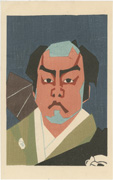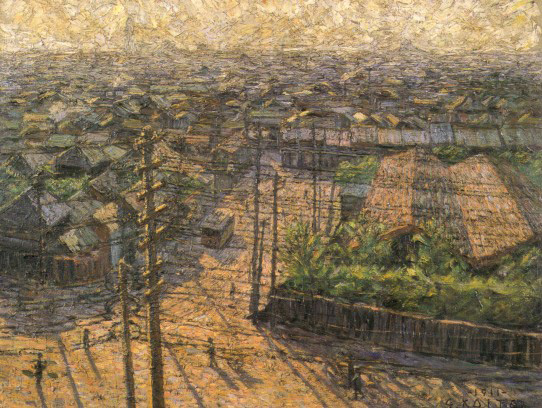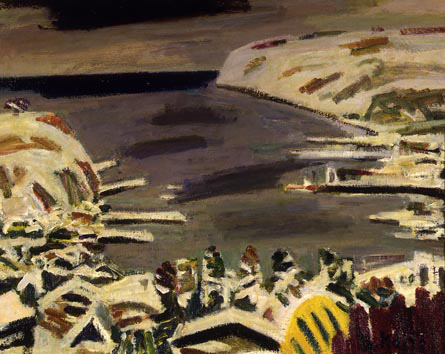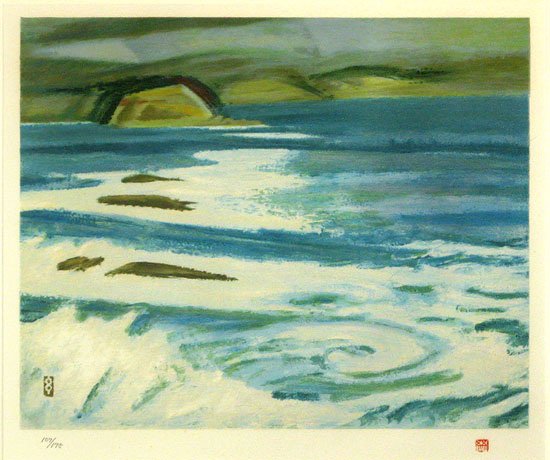Prints in Collection
Biographical Data
Biography
Koito Gentarō 小絲源太郎 (1887-1978)
Source: Biographical Dictionary of Japanese Art, Yutaka Tazawa, Kodansha International, Ltd. in collaboration with the International Society for Educational Information, Inc., 1981, p. 151; Guide to Modern Japanese Woodblock Prints: 1900-1975, Helen Merritt, University of Hawaii Press, 1992, p. 73; A Dictionary of Japanese Artists: Painting, Sculpture, Ceramics, Prints, Lacquer, Laurance P. Roberts, Weatherhill, 1976, p. 87 and others as footnoted.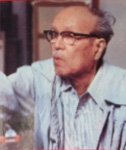 photo c. 1975 | Koito is mainly known as a Western-style (yōga) painter, rather than a printmaker1. Born in Tokyo, he attended the Tokyo School of Fine Arts (Tokyo Bijutsu Gakkō), first graduating from the metal work department in 1911 and then returning for further study in the department of Western painting, studying under the yōga artist Fujishima Takeji (1867-1943), a proponent of Western Romanticism and impressionism. Due to illness, Koito ended his yōga studies before their completion. While still attending the School of Fine Arts, he began exhibiting his paintings at the Ministry of Education exhibition (Bunten), showing regularly until 1918, when he took a six year hiatus from Bunten exhibiting and focused on sketching and painting from life. |
In 1915 his painting A Cloudy Day won Honorable Mention at the Panama Pacific International Exhibition in San Francisco.2 By the mid-1920s Koito had built a considerable reputation as a yōga painter and he again began regularly showing his work in government-sponsored exhibitions, for which he would also serve as a judge.
He participated in a number of artist societies promoting Western-style painting including both government-sponsored groups such as the Saikō Nihon Bijutsuin (Reorganized Japan Fine Art Academy) and independent societies such as Hakuba-kai (White Horse Society) and Kōfūkai. He was made an honorary life member of the Nihon Geijutsu-in (Japan Art Academy) in 1959 and in 1965 he received the Order of Cultural Merit. He became an honorary professor at the Kanazawa University of Arts and a counselor for the National Museum of Modern Art.
His early oil painting is described as showing "great attention to realistic detail"3 and he is known for combining "a bold and lively color sense with clearly articulated brushwork to capture a natural feeling of season."4
The Japan Encyclopedia entry for the artist notes that he was also a haiku poet.5
| Roofs of the City (屋根の都), 1911 oil on canvas | Fishing Port in Snow,1970 oil on canvas, 71.5×89.7 cm The National Museum of Modern Art, Tokyo O00613 |
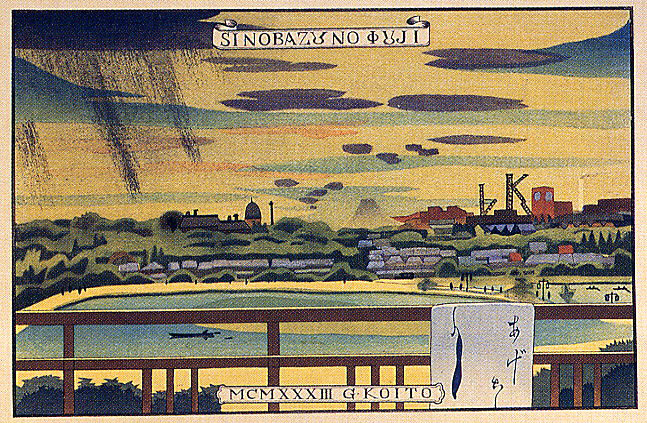 Shinobazu Pond, 1933 Shinobazu Pond, 1933woodblock print | untitled lithograph, undated |
1 Merritt notes that the artist "designed moku-hanga [woodblock prints] in 1930s", an example of which is shown above along with an example of a lithograph bearing the artist's seal. Other than these two examples and his contribution to the magazine Shin Nigao, I can find no further references to Koito's print production.
2 Official Catalogue of the Department of Fine Arts, Panama-Pacific International Exhibition (With Awards), San Francisco, California 1915, The Wahlgreen Company, 1915
3 A Dictionary of Japanese Artists: Painting, Sculpture, Ceramics, Prints, Lacquer, Laurance P. Roberts, Weatherhill, 1976, p. 87
4 Biographical Dictionary of Japanese Art, Yutaka Tazawa, Kodansha International, Ltd. in collaboration with the International Society for Educational Information, Inc., 1981, p. 151
5 Japan Encyclopedia, Louis Frédéric, Käthe Roth, Belknap Press of Harvard University Press, 2002, p. 545.
